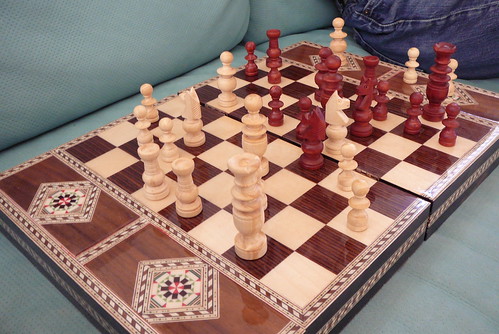
Materials
Some mats are made of wood pulp, while others are made of cotton or cotton and wood pulp. Less expensive boards are made of foam, covered in acid-free paper. Pure cotton or “rag” mats are considered the best option for protecting a piece long term, a procedure also known as “archival framing.”
Purpose of Mats
The secondary purpose of a mat is to display a piece in such a way as to draw the eye toward the art itself. The beveled aperture in a mat board is designed in such a way that it sets off the artwork, but also makes the eye want to look inward, toward the piece, much the same way as angled frames do. With a frame and then a mat, a sort of stair pattern is created, and the human eye tends to want to follow the steps to see where they lead. For this reason, even an inexpensive frame can make a photograph or sketch look more inviting, when matted with a board and a less expensive piece of art, like a print, can look almost as good as an original. Often, more than one mat will be used with a single framed piece, in order to enhance this effect.
Secondary Functions
Another function that may be served by mat boards is to further the art in some way. When a mat in a particular color is used, it may accentuate certain colors within the work and make them stand out more than they would on their own. Using two boards in different colors can make an even more striking difference in the appearance of the piece. Some art can actually be extended onto the mat itself, by the artist painting the mat or otherwise using it as an extended canvas. This has been done with photographs, as well. The scene depicted by a photo is extended onto the surrounding board by using oil or acrylics to paint the mat to match the edges of the photo.
Personalized Gifts
Photographs can be turned into more personalized gifts in this way, too, by using a scrapbooking technique on the mat, affixing flat paper souvenirs and letters related to the subject of the photo. Because the mats are not a solid color throughout, the colored outer layer can be carved away to reveal the color underneath. This means decorative designs or words can be cut into the mat’s surface. When framing a photo, this might be done with the name of the subject, so that a photo of a man named John would say “John” on the mat above, below or to the side of his image. This technique can be used with join multiple photos or sketches into a series, too, by using a different word on the mat of each. This technique would create a coherent thought when hung together, such as spelling out “Faith, Hope, Love” or “My Friends, My Family.”
Thanks for reading! For more on mats, and home improvements be sure to check out Mat Board For more ideas, and information be sure to check out next week blog post!
